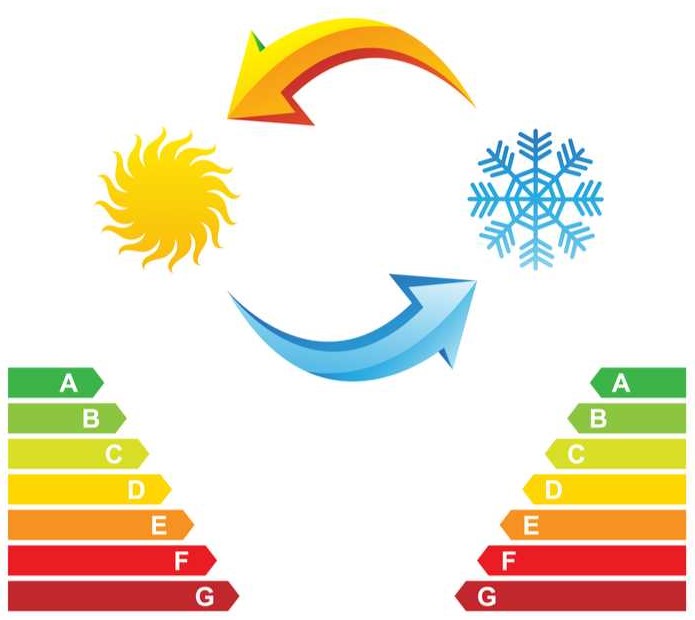The efficiency of energy using products has been greatly improved over the past decade or so, driven by changes in legislation and advancements in technology.
In particular, heating and cooling products like air source heat pumps have undergone significant transformation in terms of energy efficiency, benefitting both the end user and the environment.
But before we delve into the specifics of their efficiency, let’s take a quick look at what an air source heat pump actually is.
An air source heat pump (ASHP) is a system used to provide both heating and cooling to a building - be it a domestic property, office space, or commercial unit.
ASHPs come in two forms. Air to air heat pumps provide space heating and cooling, whilst air to water heat pumps work through a wet central heating system. When the latter are paired with compatible indoor units, they also provide cooling functionality.
This is a very basic overview. If you'd like to learn more, see our blog post - what is a heat pump and how does it work?

All heating and cooling products come with an efficiency rating. Prior to 2013, these were given as an Energy Efficiency Ratio (EER) for cooling, and a Coefficient of Performance (COP) for heating.
The issue was that these ratings were established under nominal test conditions, with systems operating at full load. Since these nominal conditions and usage suggestions did not reflect reality, the result was a gap between predicted and actual performance.
This anomaly brought about a new method of efficiency testing, introduced through the EU’s Energy Related Products (ErP) Directive:
A Seasonal Coefficient of Performance (SCOP) used for heating products.
A Seasonal Energy Efficiency Ratio (SEER) used for cooling products.
Designed to give a more realistic measure of performance over an entire year, seasonal ratings take into account:
What SCOP and SEER give you is an indication of energy consumption vs. heating or cooling output respectively. And since air source heat pumps can heat and cool, you’ll find both SCOP and SEER ratings provided by the manufacturer.
When it comes to seasonal efficiency, products vary, but generally speaking the higher the rating the better. This means your heat pump requires less energy to operate, lowering your carbon footprint and generating cost savings.
A key thing to remember though is that SCOP and SEER indicate maximum efficiency, and this will not be achieved in all circumstances.
To ensure the greatest energy savings, an air source heat pump should be correctly matched to the demands of the building in which it is installed. In domestic properties this is fairly straightforward, but in a business setting it’s more complex - you’ll need to account for how the space is used and typically occupancy, as well as considering a flexible design, future proofed for any possible changes in premises use.
If you’re considering installation of an air source heat pump, or upgrading an existing system, we’re happy to talk you through your options, and provide further guidance on energy efficiency.
